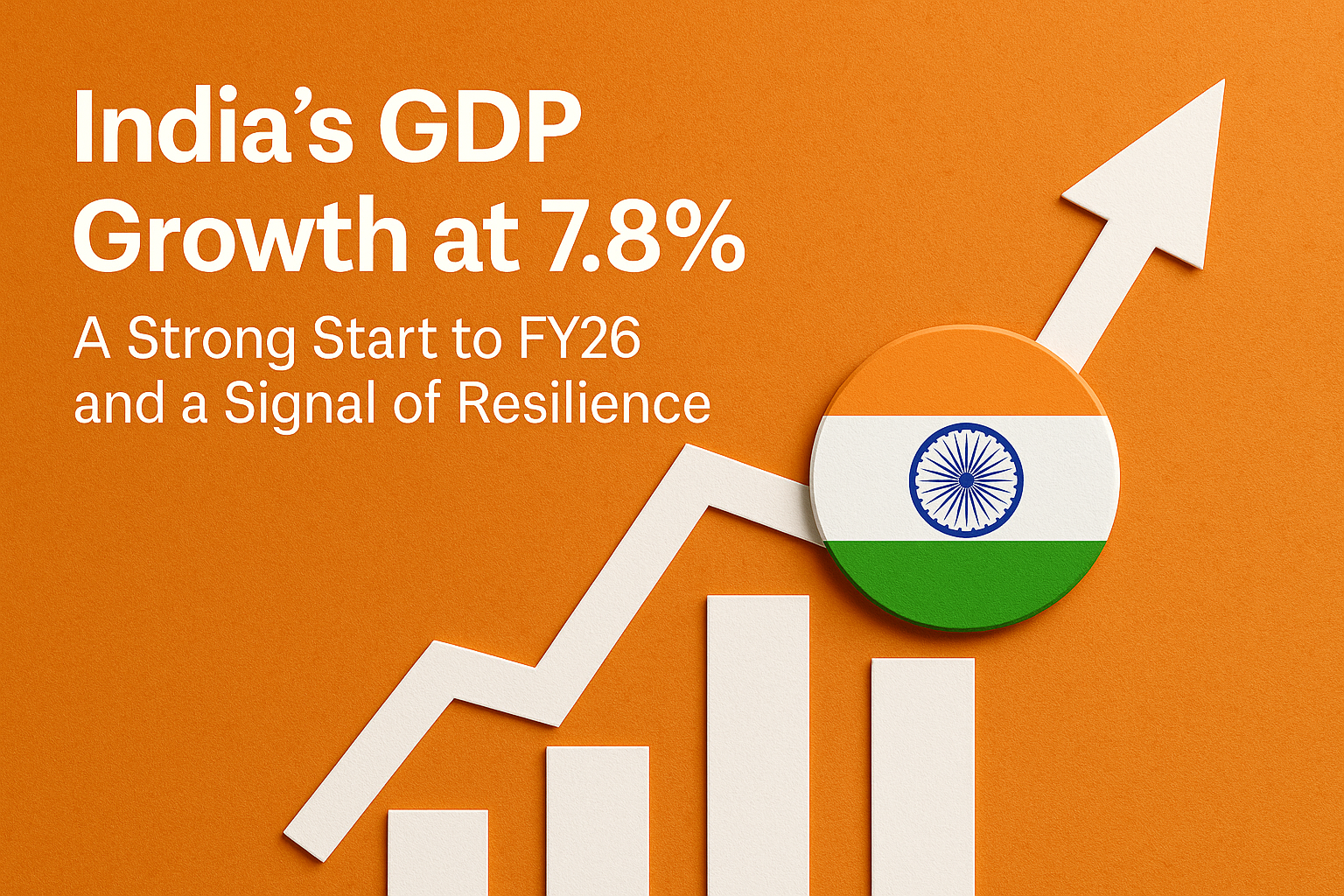
India’s GDP Growth at 7.8%: A Strong Start to FY26 and a Signal of Resilience
India’s economy has begun the financial year 2025-26 on a strong note. The latest data from the National Statistics Office (NSO) shows that GDP grew by 7.8 percent in Q1 (April–June), comfortably beating both market expectations and the Reserve Bank of India’s own forecast of 6.5 percent.
In absolute terms, real GDP — adjusted for inflation — rose to Rs 47.89 lakh crore, compared to Rs 44.42 lakh crore in the same quarter last year. Nominal GDP, which includes inflation, stood at Rs 86.05 lakh crore, recording an 8.8 percent jump. This performance reflects not just numbers on a chart but the pulse of an economy that is finding new levers of growth.
Services, Manufacturing, and Agriculture: The Three Engines
What makes this growth remarkable is that it is broad-based. Services and manufacturing continued to be the two major growth engines. The manufacturing sector expanded by 7.7 percent, slightly better than last year’s 7.6 percent, proving that India’s factories are not only running but also adapting to global headwinds.
Equally noteworthy is the performance of the agriculture sector, which grew by 3.7 percent, a sharp improvement from the 1.5 percent growth in the same quarter last year. In a country where agriculture is still the primary livelihood for a significant population, this uptick is important. It means rural incomes are healthier, consumption is more robust, and the benefits of growth are more widely spread.
When manufacturing holds steady, services remain strong, and agriculture picks up, the result is not just growth but inclusive growth.
Beating Global Peers
Another headline is India’s position on the global stage. At 7.8 percent, India remains the fastest-growing major economy in the world. For comparison, China — the only other giant in the same league — grew by 5.2 percent in the same quarter.
This matters not just for bragging rights. In a world facing geopolitical uncertainty, inflationary pressures, and trade frictions, the fact that India can grow faster than its peers gives confidence to investors, policymakers, and citizens alike. Growth is not just an economic measure; it is a strategic asset.
Why It Matters More Than Just a Number
Numbers like 7.8 percent growth are not only about quarterly reporting. They tell us something deeper about India’s trajectory. First, they highlight resilience — an ability to adapt and grow despite global headwinds. Second, they reflect momentum — India is building on previous years rather than relying on a one-time surge.
The Reserve Bank of India had predicted more modest growth for FY26: 6.5 percent for Q1, 6.7 percent for Q2, 6.6 percent for Q3, and 6.3 percent for Q4. By outperforming in the very first quarter, India has sent a clear signal that the fiscal year could end better than expected.
Of course, challenges remain. Global trade tensions, rising oil prices, and new tariff regimes from the US could weigh on future quarters. But the lesson from Q1 is that India’s economic base is strong enough to absorb shocks while still moving forward.
Looking Ahead: Growth with Purpose
For India, GDP growth is more than a statistic; it is the foundation for jobs, infrastructure, and aspirations. Strong agriculture growth means a better life in villages. Stable manufacturing growth means more industrial jobs. Services growth means global competitiveness. Together, they create a multiplier effect — raising incomes, boosting consumption, and generating taxes that can be reinvested in development.
If the first quarter is a signpost, then FY26 could well be a year when India not only sustains its tag as the fastest-growing major economy but also deepens the quality of growth. That means growth driven by productivity, inclusiveness, and resilience rather than short-term spikes.
Conclusion
India’s 7.8 percent GDP growth in Q1 FY26 is more than a pleasant surprise — it is a statement of confidence. It tells us that the economy is learning to grow through uncertainty, that the structural reforms of past years are bearing fruit, and that the engines of agriculture, manufacturing, and services are pulling together.
As the world looks increasingly volatile, India’s steady momentum is a reminder that growth is not just about numbers; it is about direction, discipline, and determination. FY26 has begun with optimism, and if managed well, it could end with transformation.



